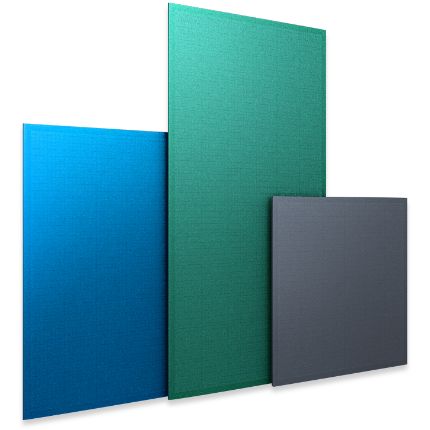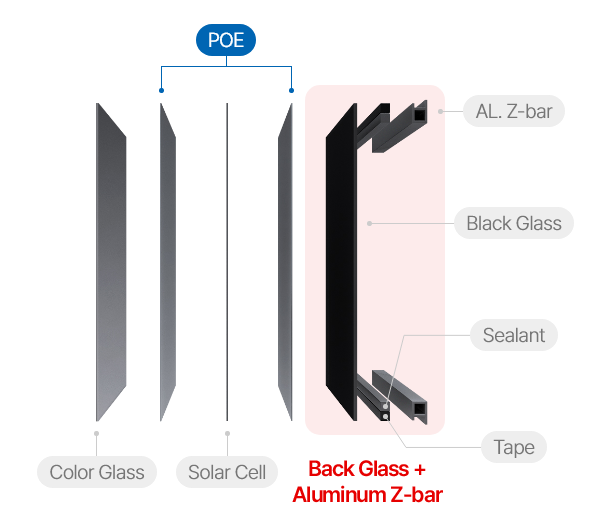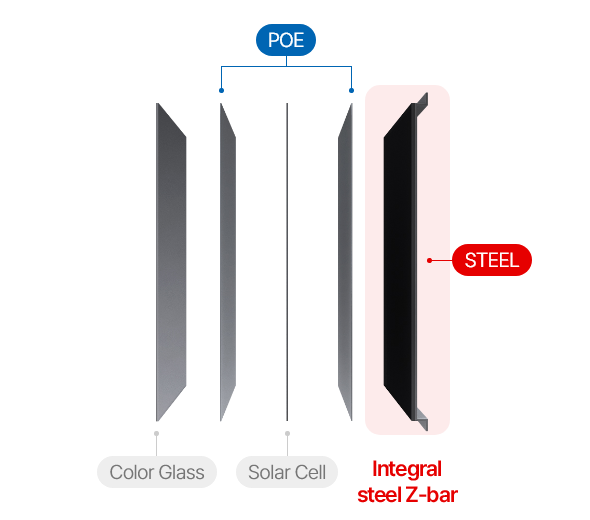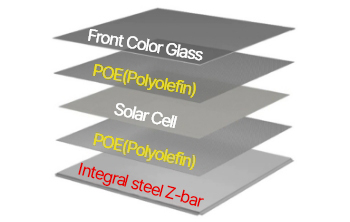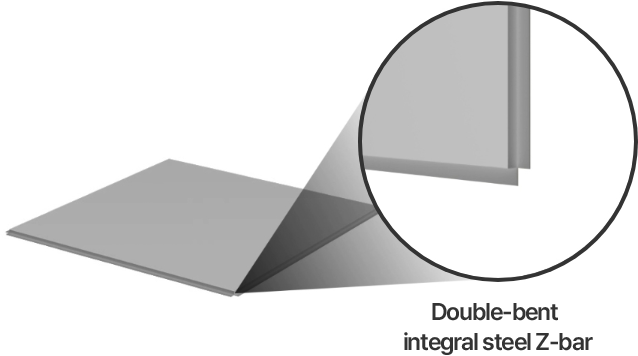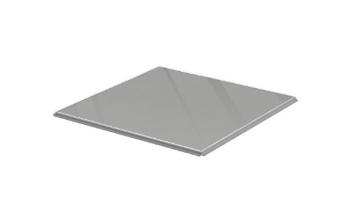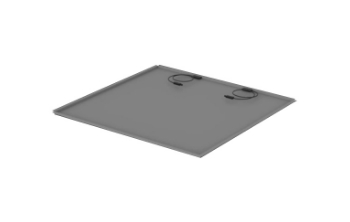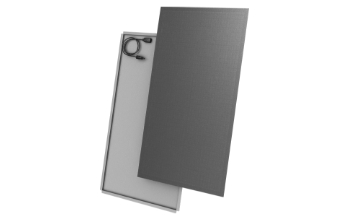Technology
01Glass to Glass / Glass to Steel Diagram Comparison
02Integral Z-bar (Glass to Steel) manufacturing technology
03Polyolefin (POE) Packaging Tenchology
Comparison of packaging material properties
| Item | EVA(Ethylene Vinyl Acetate) | POE(Polyolefin) | Remarks |
|---|---|---|---|
| Vinyl Acetate Content (Vinyl Acetate)(wt%) | 28±4 | 0 | |
| PID(Potential-induced degradation) Volume resistivity(Ω-Cm) | ≥1×1014 | ≥1×1016 | 100x ↑ |
| Glass adhesion strength (N/cm) | 154 | 272 | 1.7x ↑ |
| Degree of crystallinity (%) | 9.9 | 20.2 | 2x ↑ |
| Moisture penetration rate WVTR(38℃×90% RH,500um)(g/m2-day) | 34 | 3.3 | 1/10x ↓ |
Improvement
Long-term reliabilityas a building material can be ensured by utilizing POE packaging materials.
- EVA(Ethylene Vinyl Acetate)
- PID(Degradation due to electrical potential difference)
- Delamination(Occurrence of moisture penetration/Delamination/thermal expansion)
- Corrosion (acetic acid)

- POE(Polyolefin)
- Anti - PID
- Significantly lower delamination due to low moisture penetration rate
- No Corrosion
04Glass to Glass / Glass to Steel BIPV Comparison
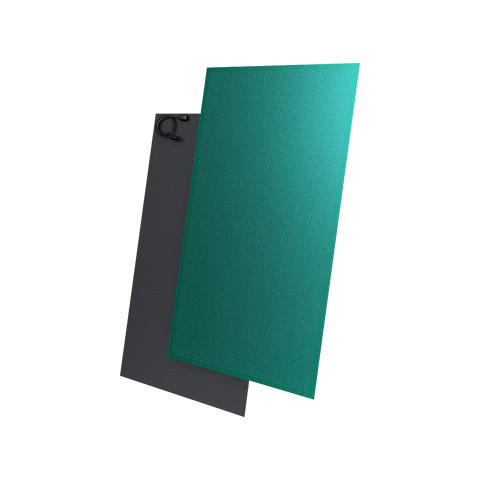
Glass to Glass
VS
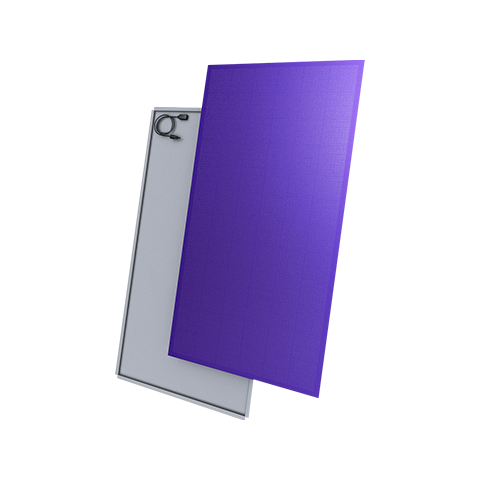
Glass to Steel
| Tempered glass + aluminum Z-bar | Rear material | Integral steel Z-bar EGI |
|---|---|---|
| Non-flammable AL melting point (660℃) |
Non-flammable properties(1200℃ in case of fire) | Super non-flammable EGI melting point (1500℃) |
| 90.5% | Thermal resistance (at 33℃ external temperature)(STC 100%) | 92.5% |
| 100% | Price | 90% (compared to G to G) |
| 46Kg | Weight(based on 1000x2000) | 37Kg (20% reduction) (compared to G to G) |

